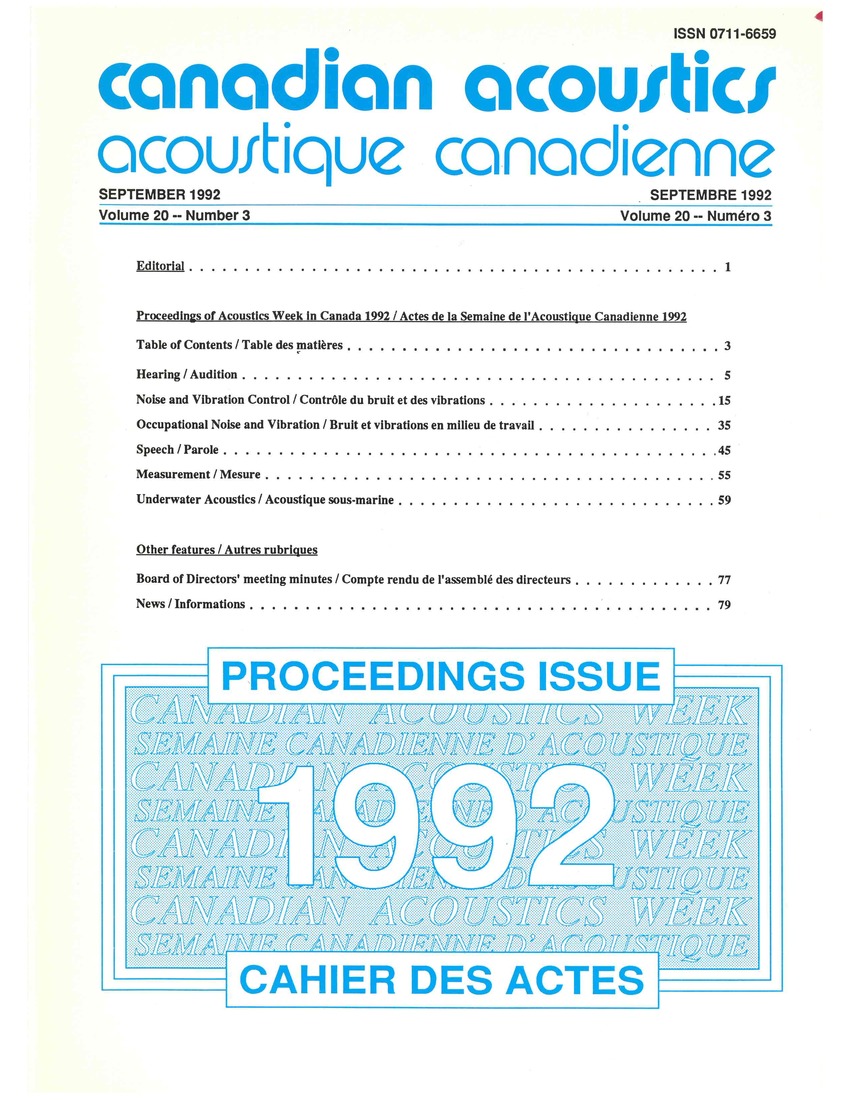Finite element modelling of machinery vibration isolation systems
Keywords:
acoustic noise, finite element analysis, noise abatement, vibrations, ship machinery, space noise levels, weight limitations, foundation structures, isolation system effectiveness, passive vibration isolation systems, resilient isolators, helical compression spring isolatorAbstract
Vibration isolation of ship machinery is needed to achieve low radiated and habitable space noise levels. Shipboard isolation systems can be more difficult to design than similar systems on land due to space restrictions, weight limitations and ship motion considerations. Supporting foundation structures are often lightweight and relatively flexible and can influence the isolation system effectiveness. DREA is enhancing an in-house finite element vibration and strength analysis code VAST to facilitate the analysis of passive vibration isolation systems. The author describes the application of VAST to two problems. The first examines a simple machine decoupled from a flexible foundation structure using sixteen resilient isolators. The second considers the prediction of the natural frequencies of vibration of a helical compression spring isolatorAdditional Files
Published
How to Cite
Issue
Section
License
Author Licensing Addendum
This Licensing Addendum ("Addendum") is entered into between the undersigned Author(s) and Canadian Acoustics journal published by the Canadian Acoustical Association (hereinafter referred to as the "Publisher"). The Author(s) and the Publisher agree as follows:
-
Retained Rights: The Author(s) retain(s) the following rights:
- The right to reproduce, distribute, and publicly display the Work on the Author's personal website or the website of the Author's institution.
- The right to use the Work in the Author's teaching activities and presentations.
- The right to include the Work in a compilation for the Author's personal use, not for sale.
-
Grant of License: The Author(s) grant(s) to the Publisher a worldwide exclusive license to publish, reproduce, distribute, and display the Work in Canadian Acoustics and any other formats and media deemed appropriate by the Publisher.
-
Attribution: The Publisher agrees to include proper attribution to the Author(s) in all publications and reproductions of the Work.
-
No Conflict: This Addendum is intended to be in harmony with, and not in conflict with, the terms and conditions of the original agreement entered into between the Author(s) and the Publisher.
-
Copyright Clause: Copyright on articles is held by the Author(s). The corresponding Author has the right to grant on behalf of all Authors and does grant on behalf of all Authors, a worldwide exclusive license to the Publisher and its licensees in perpetuity, in all forms, formats, and media (whether known now or created in the future), including but not limited to the rights to publish, reproduce, distribute, display, store, translate, create adaptations, reprints, include within collections, and create summaries, extracts, and/or abstracts of the Contribution.


